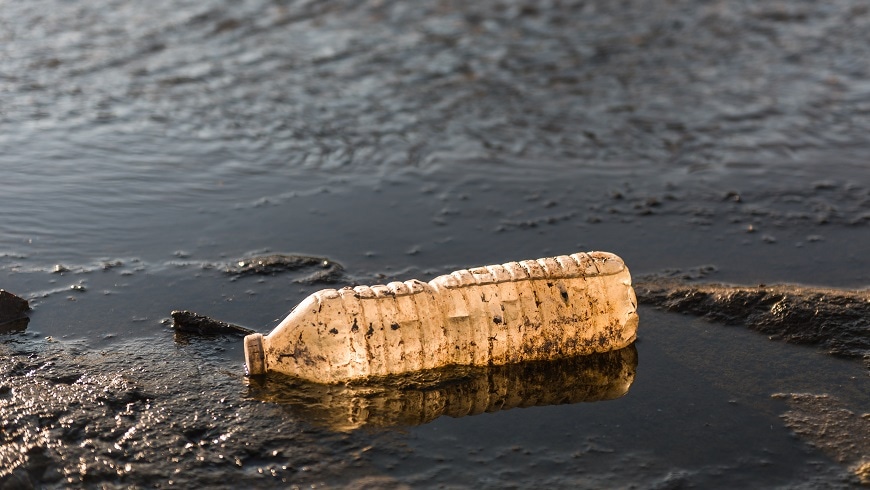Jul 18 2019
The environment is flooded with plastic, which is not a good sign. Now, for the first time, the Federal Office for the Environment (FOEN) has directed Empa researchers to estimate the amount of plastic that enters into the environment.
 (Image credit: Bernd Nowack / Empa)
(Image credit: Bernd Nowack / Empa)
Such measures would help in accurately estimating the extent of plastic pollution that occurs in Switzerland. As such, Empa has examined the seven most commonly used types of plastic. Over 5000 tons of plastic are released into the environment each year, reported the study.
These outcomes demonstrate that plastic load present in and on soils is considerably higher than in waters. Other types of plastics, specifically rubber, which is discharged into the environment from the abrasion of tires, were not considered in the study.
The Empa study concentrated on certain types of plastic such as polystyrene and expanded polystyrene, polypropylene, PET, PVC, and polyethylene (LD-PE and HD-PE) that are used, for instance, in agricultural films, packaging, insulation materials, and textiles.
The investigators tracked the path of these forms of plastics to the Swiss environment, right from production and use through to disposal, and eventually created a model through which these material flows can be estimated. The team differentiated between macroplastics (larger than 5 millimeters) and microplastics (smaller than 5 millimeters).
On the whole, about 5,120 tons of the seven different types of plastics are released into the environment every year. This is about 0.7% of the entire amount of the seven types of plastics consumed in Switzerland every year (that amounts to a total of about 710,000 tons). And every year, about 4,400 tons of macroplastic are deposited, shows Empa’s modeling.
Moreover, roughly 100 tons of macroplastic are released into waters. In fact, approximately 15 tons of microplastics end up in waters, and 600 tons in or on soils. Therefore, the amount of microplastics is relatively smaller when compared to that of macroplastics; by contrast, the amount of microplastic particles that could have an effect on organisms is considerably larger.
However, to get an overall picture of plastic pollution in Switzerland, the abrasion of tires should also be considered. A number of studies have recognized this material as the biggest source of microplastics. A new study performed by Empa researchers will give additional information on this source of plastic pollution.
40-Times More Plastic in Soils than in Waters
The analysis of the seven different types of plastics demonstrates that the amount of plastic that ends up into the soil is approximately 40-times higher when compared to the amount of plastic released into water bodies. Littering is the primary reason for this— waste is carelessly thrown away, polluting not only soils but also waters with macroplastics. A large part of this plastic is collected by cleaning the public spaces; however, part of the plastic continues to lie there.
The use of plastic films in agriculture is another major source of macroplastic in soils. Moreover, macroplastic ends up in the soils via the composting of organic waste containing plastic.
All things considered, agriculture and the construction industry are the most significant source of microplastics in soils, for instance, through the wear and tear of pipes and foils and the dismantling and installation of insulation on houses. In addition, waste disposal shreds plastic waste for recycling purposes, and therefore it also plays a role—to a lesser extent—in microplastic pollution.
Cosmetics and the washing and wearing of synthetic fiber clothing are the main sources of microplastics in waters. However, when these sources were measured against the modeled soil contamination, they seemed to be low. Furthermore, efficient wastewater treatment plants remove a huge part of microplastic from the wastewater. A new Empa study has demonstrated that at present, microplastics do not present any threat to Europe’s aquatic organisms.
Research Projects and Measures for the Future
The calculations made by Empa researchers make it feasible to spot upcoming areas of research and action. To be specific, the soils’ plastic contamination should be looked into more detail. Based on the type of plastic utilized, numerous options are available for action: disposable packaging should be disposed of as waste and this fact should be emphasized among consumers so that they become even more aware of plastic pollution.
Better cleaning measures, for instance along roads, prevent environmental pollution with the discarded waste. In agriculture, it is important to reduce the input of plastics into the soil. The problem of plastic pollution should be spread among companies in the construction and waste sectors. At the political level, a number of initiatives are urging for measures to be implemented in the area of plastics. At present, the FOEN is considering additional measures to bring down the environmental effect of plastics.